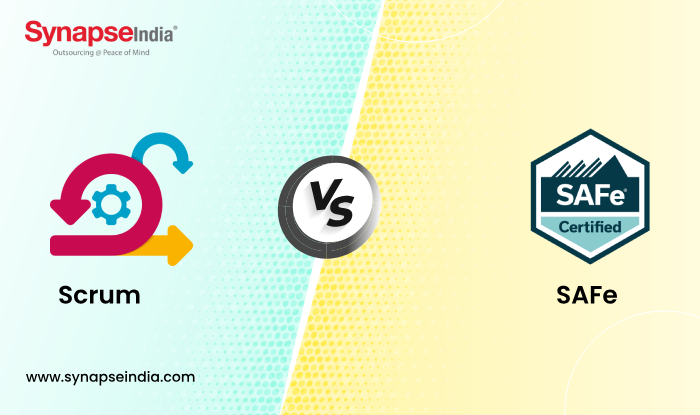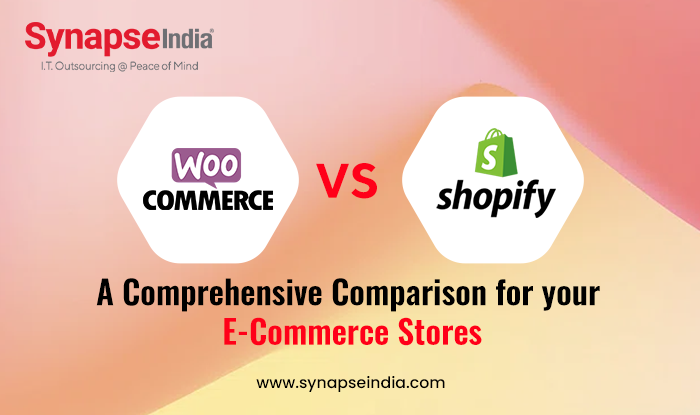 24 May 2024
24 May 2024
Agile technologies like Scrum and SAFe have grown in popularity for years in the sector of project management. These two different frameworks operate according to Agile and Lean ideas and ideals. Both of them are popular among organizations and public knowledge. A company's ability to supply goods and services quickly and efficiently is a goal, so it's critical to comprehend the subtle variations between these two strategies. We examine the fundamental ideas, practices, and uses of SAFe and Scrum in contemporary project management as we compare and contrast them in this blog. Regardless of your experience level with agile practices or level of familiarity with frameworks, this investigation will offer insightful information on selecting the best approach for the requirements of your company.

Scrum is a popular agile framework that is well-known for its incremental and iterative approach to project management. Fundamentally, Scrum places a strong emphasis on teamwork, adaptability, and ongoing development to produce high-quality products quickly.
All things considered, Scrum provides a simple yet efficient framework for promoting collaboration, producing value iteratively, and adapting successfully to change in the fast-paced corporate world of today.
The Scaled Agile Framework, or SAFe, is a thorough method for putting agile concepts into large organizations and scaling them up. Designed by Scaled Agile, Inc., SAFe offers an organized framework that helps businesses deal with the difficulties of managing intricate dependencies, leading numerous agile teams, and producing results quickly.
SAFe is fundamentally founded on the ideas of systems thinking, agile development, and lean thinking. It is intended to retain flexibility and agility while coordinating the efforts of many teams within a company toward shared business objectives.
Several salient characteristics set it apart from conventional project management techniques:
Scrum divides the project into manageable chunks called "sprints," which usually span two to four weeks.
Cross-functional and self-organizing, scrum teams are made up of individuals with all the abilities required to complete the product increment.
A prioritized list of all the work that has to be done on the project is called the Product Backlog.
It provides an organized method for agile transformation and has several important components, including:
ARTs are cross-functional, long-term teams that provide results within a set amount of time, usually eight to twelve weeks.
Teams gather during PI Planning, a crucial SAFe event, to organize and prioritize the work for the next Program Increment, which usually consists of many sprints.
SAFe integrates lean concepts with portfolio management to guarantee that companies are allocating resources to the appropriate projects and optimizing value delivery.

Difference between Scrum and SAFe
| Feature | Scrum | SAFe |
|---|---|---|
| Framework | Agile framework | Scaled Agile Framework (SAFe) |
| Scale | Designed for small, cross-functional teams | Designed for large enterprises and multiple teams |
| Planning | Sprint planning and daily stand-ups | Program Increment (PI) planning and PI objectives |
| Meetings | Daily Stand-up, Sprint Review, Sprint Retrospective | PI Planning, Scrum of Scrums, System Demos, Inspect and Adapt |
| Time Frame | Timeboxed sprints of 2-4 weeks | Program Increments typically last 8-12 weeks |
| Flexibility | Emphasizes flexibility and adaptability | Provides structure and guidelines for scaling agility |
| Governance | Limited governance structure | Includes Lean Portfolio Management and governance mechanisms |
| Dependencies | Teams are independent and manage their dependencies | Emphasizes identifying and managing dependencies between teams and ARTs |
| Adoption Difficulty | Easy to adopt and implement for small teams | Requires organizational buy-in and may be challenging to implement |
The specific requirements and organizational preferences of your company will choose which of Scrum and SAFe to use. For small, cross-functional teams wishing to include agile principles into their development process, Scrum is perfect. It provides ease of use, adaptability, and an emphasis on iterative development and ongoing enhancement. Scrum places a strong emphasis on team autonomy and self-organization through positions like Product Owner, Scrum Master, and Development Team.
SAFe, on the other hand, is intended for larger businesses and organizations that have several teams working on challenging projects. With features like Agile Release Trains (ARTs), Program Increments (PIs), and extra roles like Release Train Engineer (RTE), it offers a systematic framework for expanding agility across the enterprise. With an emphasis on managing dependencies between teams and ARTs and coordinating business strategy with execution, SAFe provides a more prescriptive way to scale agile processes.
The choice between Scrum and SAFe ultimately comes down to elements like your organization's size and complexity, the amount of agility needed, and the culture inside it. While some organizations might find that Scrum is enough for their requirements, others can gain from the extra structure and governance that SAFe offers. It's crucial to thoroughly assess your needs and weigh the advantages and disadvantages of each framework before choosing one.

 01 Dec 2023
01 Dec 2023
